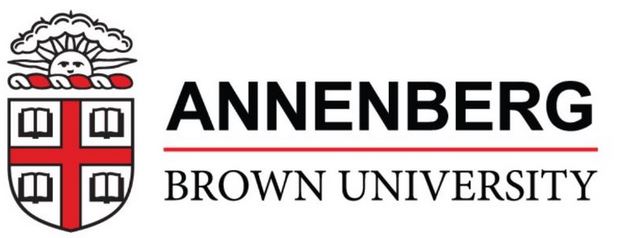
PROVIDENCE – As of last June, public school districts across Rhode Island have spent about one-third of federal COVID-19 relief funds to help local schools recover from the pandemic.
At the current spending pace, the state and its public schools could potentially lose out on approximately $200 million in federal assistance if that money is not fully spent by the end of next year.
That data is part of a new report released Wednesday by Brown University’s Annenberg Institute. It currently paints a bleak picture of where districts currently stand with spending its share of the federal Elementary and Secondary School Emergency Relief funds, where it has been spent and what could happen if it’s not fully spent by the end of 2024.
The 18-page report, titled “Tracking Rhode Island’s COVID-19 Recovery: A First Look at Districts’ Strategic Stang and Personnel Investments,” says the $650 million-plus in ESSER funds Rhode Island received represents the largest one-time infusion of federal dollars to help public K-12 schools in the state. Using line-item data from Rhode Island’s district accounting system alongside interviews with district leaders, Annenberg investigated overall spending patterns and expenditures in the largest budget categories – personnel, supplies and partners, technology, and operations and facilities.
The report was funded by the Rhode Island Foundation and the R.I. Department of Education provided accounting data for it, said Annenberg Director of Applied Research Nate Schwartz, who co-authored the report along with Kate Donahue, Alexander J. Bolves and Gisselle Rodriguez Benitez. Annenberg’s findings and conclusions were independent, Schwartz said.
According to the report, Rhode Island public school districts had spent as of June 2022 only $216 million in ESSER funds since they were first allocated in May 2020. That spending rate, the report said, places the Ocean State as “among the slowest spenders statewide.”
Of the 36 public school districts, 27 of them have spent 50% or less of their budgeted ESSR funds as of June 2022, according to the report. Thirteen of those districts, including Providence, Pawtucket, Central Falls, South Kingstown, Smithfield and Scituate, had spent less than 40% of their budgeted ESSER funds as of June 2022.
Furthermore, Annenberg found that ESSER staffing dollars have “not yet created large-scale transformation” across Rhode Island. The report says staffing levels have stayed “flat,” with districts using “large percentages” of ESSER funds to pay for existing staff.
Regarding teachers, the report notes that the average number of school teachers has dropped by 1% across the state, while the number of nurses and social workers in schools has increased by 5%. RIDE spokesperson Ashley Cullinane said Wednesday in an email to PBN the workforce shortage impacting our state and the nation “has posed significant challenges.” RIDE and local education agencies, she says, are working on efforts to develop hiring incentives to recruit and retain talent in addition to strengthening critical partnerships with higher education and industry professionals.
However, unlike Providence, most other districts spent the majority of their ESSER funds to date on salaries and benefits rather than additional compensation. But, districts have spent ESSER funds on school infrastructure needs, the report says.
“Districts had spent about half of the funds budgeted toward technology and facilities on long-term upgrades,” the report states. “Nearly every school in the state is now set up for one-to-one computing and most districts invested in building infrastructure, updating HVAC systems and other health-related facility needs.”
But, the report notes that districts will only reach 65% of the spending total by the end of the grant period next year if districts remain slow on ESSER spending. Annenberg did says that spending rates “have increased each year” and the spending data does not reflect the full set of obligations districts have made, making it “hard to tell at this stage” how district spending will look by the end of next year.
This is not the first time in which the state has been slow in spending COVID-19 relief funding. A Nov. 6, 2020, cover story spotlighted that the state had spent at the time only about $300 million out of its $1.25 billion share of the Coronavirus Aid, Relief, and Economic Security Act funds since it was allocated in the spring of 2020 during the pandemic’s onset. Then-Gov. Gina M. Raimondo in December 2020 said the state was on track to spend every dollar of the state’s share of the CARES Act before the end of 2020.
RIDE officials did not immediately respond Wednesday to requests for comment as to how RIDE will respond to this report or assist school districts on spending their ESSER funding.
Cullinane says RIDE is supporting school communities in their ESSER spenddowns through “intentional braiding” with federal programs and other sources. She also said LEAs in June can amend their budgets to reflect actual ESSER expenditures and make any revisions in advance of the Sept. 30 deadline. LEAs may also indicate any shifts in ESSER budgeting based on alignment with their strategic and school improvement plans as they look to the 2023-24 school year, Cullinane said.
“It is paramount they wield federal funds with strategic intent, ensuring each dollar is carefully allocated to maximize impact,” Cullinane said, “while also mindfully spending down other time-sensitive funding sources, such as state and federal grants, and considering sustainability in investments once the spending deadline passes and the ‘fiscal cliff’ arrives.”
(Update: Comment from RIDE spokesperson Ashley Cullinane added in 9th, 15th and 16th paragraphs)
James Bessette is the PBN special projects editor, and also covers the nonprofit and education sectors. You may reach him at Bessette@PBN.com. You may also follow him on Twitter at @James_Bessette.













Congrats to Dan McKee and the Teachers’ Unions. Great job, not.